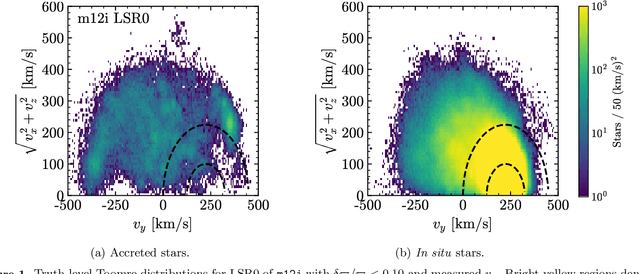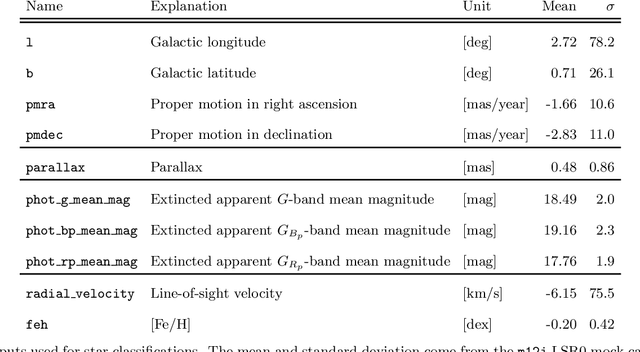Mariangela Lisanti
Cataloging Accreted Stars within Gaia DR2 using Deep Learning
Jul 15, 2019



Abstract:The goal of this paper is to develop a machine learning based approach that utilizes phase space alone to separate the Gaia DR2 stars into two categories: those accreted onto the Milky Way from in situ stars that were born within the Galaxy. Traditional selection methods that have been used to identify accreted stars typically rely on full 3D velocity and/or metallicity information, which significantly reduces the number of classifiable stars. The approach advocated here is applicable to a much larger fraction of Gaia DR2. A method known as transfer learning is shown to be effective through extensive testing on a set of mock Gaia catalogs that are based on the FIRE cosmological zoom-in hydrodynamic simulations of Milky Way-mass galaxies. The machine is first trained on simulated data using only 5D kinematics as inputs, and is then further trained on a cross-matched Gaia/RAVE data set, which improves sensitivity to properties of the real Milky Way. The result is a catalog that identifies ~650,000 accreted stars within Gaia DR2. This catalog can yield empirical insights into the merger history of the Milky Way, and could be used to infer properties of the dark matter distribution.
 Add to Chrome
Add to Chrome Add to Firefox
Add to Firefox Add to Edge
Add to Edge